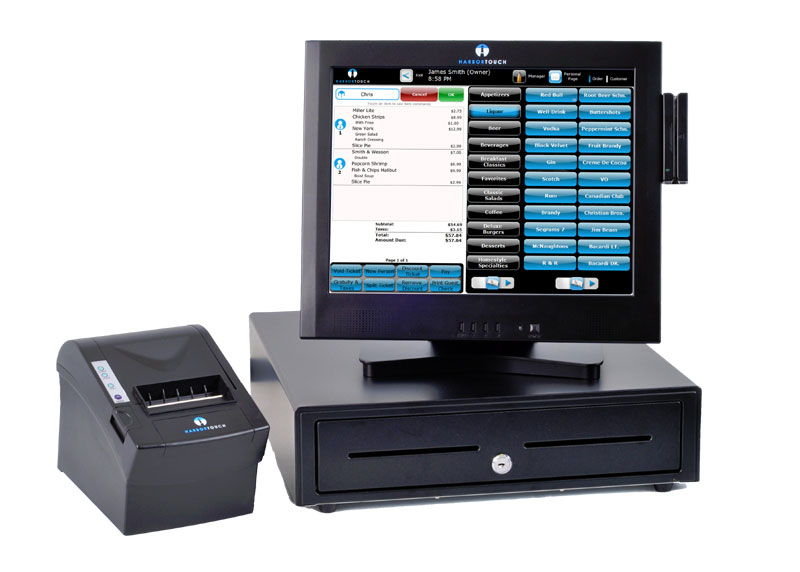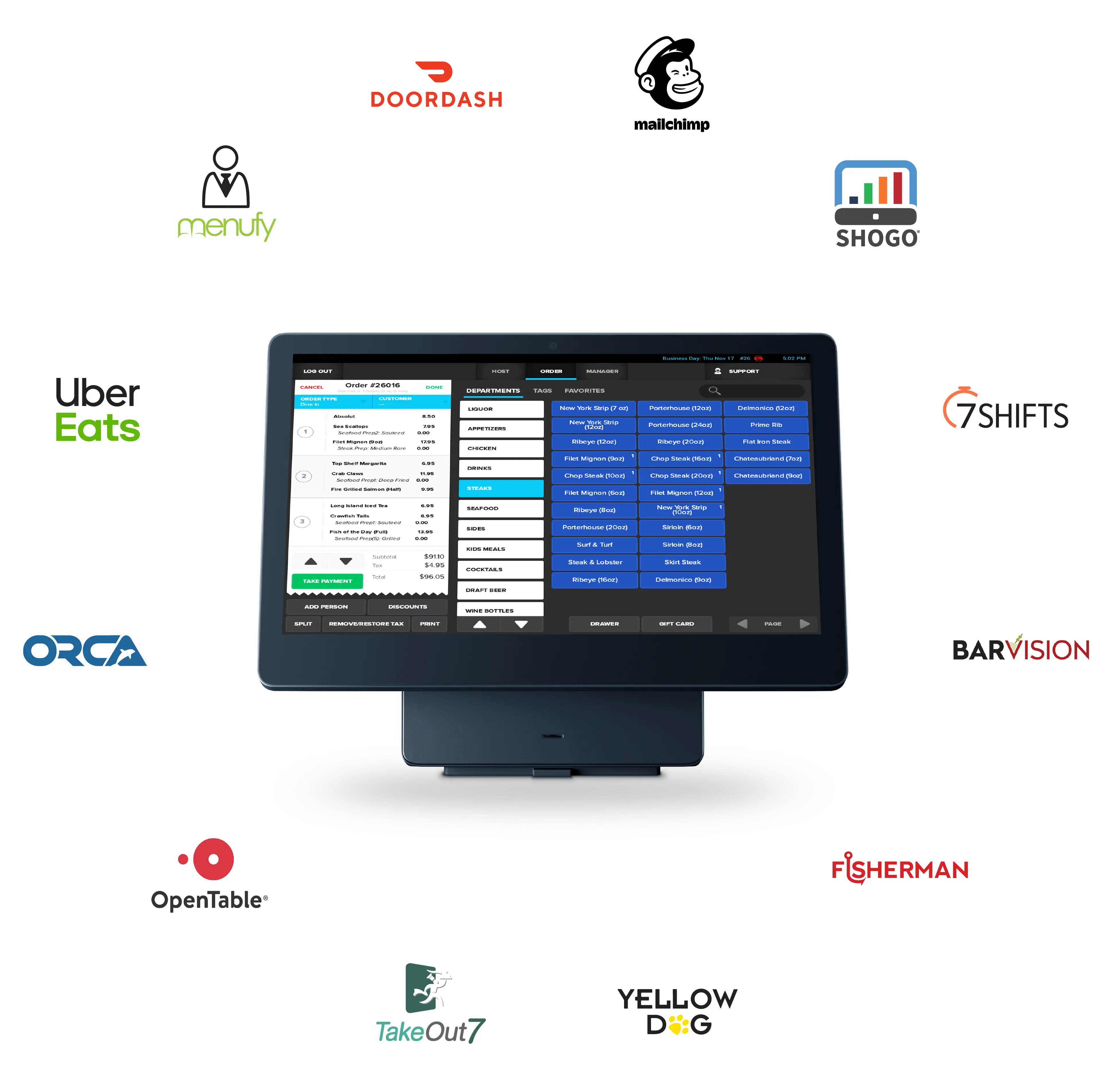Just How POS System Works: A Comprehensive Guide for Entrpreneurs
A POS system works as a crucial device for modern-day organizations, incorporating numerous parts to enhance procedures. It incorporates hardware like barcode scanners and software to buy tracking. This system not just processes purchases yet likewise handles supply and evaluates customer behavior. Recognizing its functionality can significantly affect a company's performance and decision-making. What are the vital elements that add to this effectiveness? Checking out these elements supplies important understandings.
Understanding the Components of a POS System
A Point of Sale (POS) system is made up of a number of crucial parts that function together to assist in purchases and take care of organization operations. At its core, the equipment includes tools such as a cash register, barcode scanner, invoice printer, and payment incurable, all necessary for refining sales (Restaurant POS Software). The software part handles stock, sales monitoring, and consumer data, giving valuable insights for business decisions.Additionally, data sources keep deal documents and client info, guaranteeing information stability and security. Network connection enables real-time updates and accessibility to cloud-based solutions, enhancing operational effectiveness. Interface, designed for convenience of usage, enable staff to browse the system quickly, decreasing training time. With each other, these elements develop a natural system that simplifies the sales process, improves client solution, and aids in reliable monitoring of organization resources. Comprehending these elements is essential for local business owner looking for to optimize their POS systems
How Sales Deals Are Processed
When a customer decides to buy, the sales purchase launches a collection of systematic actions within the POS system. The cashier inputs the items being bought, which are checked through a barcode visitor or by hand gotten in. This activity fetches item details, including pricing and relevant tax obligations, from the system's database.Next, the client is offered with the overall amount due. The POS system after that refines the settlement, whether through cash, credit scores card, or mobile payment techniques. For digital settlements, the POS safely connects with repayment processors to accredit and confirm the transaction.Once the settlement is validated, the system produces an invoice, which can be printed or sent out electronically. This receipt acts as proof of purchase for the customer. The purchase information is recorded in the system, guaranteeing exact sales records and financial tracking for the organization.
Inventory Management and Monitoring
Efficient inventory management and tracking are necessary parts of a POS system, as they assure that businesses preserve suitable supply levels and minimize disparities. A robust POS system enables real-time inventory updates, reflecting sales and returns immediately. This allows organization owners to keep an eye on supply degrees properly, guaranteeing that popular things are conveniently available while preventing overstocking of less prominent products.Additionally, progressed POS systems offer features such as automated stock alerts and reorder ideas, improving the purchase procedure. Barcoding and RFID technology enhance accuracy in tracking supply movement, minimizing human error. Substantial reporting devices offer understandings into inventory turnover rates, helping companies make notified decisions concerning purchasing and item offerings. Eventually, efficient inventory monitoring via a POS system not just improves operational effectiveness however also improves client contentment by making certain product schedule.

Analyzing Customer Information and Insights
Customer information analysis functions as a powerful tool for services using a POS system. By gathering and checking out transaction information, companies can uncover beneficial insights about customer behavior and choices. This evaluation allows them to recognize buying patterns, peak shopping times, and popular products, thus informing inventory choices and advertising and marketing strategies.Additionally, organizations can segment their client base, permitting individualized marketing efforts that accommodate certain demographics or purchasing routines. Comprehending customer loyalty patterns also helps in creating targeted promos and benefits programs.The information obtained from a POS system can additionally reveal insights into customer feedback, allowing businesses to make informed decisions regarding product offerings and solution improvements. Eventually, leveraging consumer information effectively can enhance the overall purchasing experience, foster customer satisfaction, and drive revenue development.
Benefits of Carrying Out a POS System
Executing a POS system uses next many advantages that can substantially enhance organization procedures. To start with, it streamlines deal procedures, reducing wait times you could try this out and improving customer complete satisfaction. By automating sales procedures, businesses can minimize human mistake and guarantee precise record-keeping. Additionally, a POS system provides beneficial data analytics, enabling owners to track sales patterns and inventory levels in real-time. This insight supports notified decision-making, helping to maximize supply administration and advertising strategies.Moreover, many POS systems incorporate with other service devices, such as audit software application, simplifying monetary monitoring. Improved worker management features, such as tracking hours and efficiency, further add to functional efficiency.Lastly, the application of a POS system can cause raised revenue with boosted customer experiences and tactical insights, eventually fostering organization development and sustainability.
Often Asked Inquiries
What Types of Organizations Can Take Advantage Of a POS System?

Just how much Does a POS System Normally Cost?
The price of a POS system generally varies from a couple of hundred to numerous thousand bucks, depending upon functions, equipment, and software - Restaurant POS Software. Companies have to think about recurring charges for maintenance, support, and purchase handling when budgeting

Can I Integrate a POS System With Existing Software?
Integrating a POS system with existing software is usually feasible. Several systems provide APIs or integrated compatibility attributes, enabling organizations to simplify operations and improve functionality by attaching different software program applications properly.
What Training Is Required for Personnel to Use a POS System?
Training for team to use a POS system generally consists of understanding software application performances, refining deals, managing supply, and managing customer communications - Restaurant POS Software. Practical demos and hands-on method sessions enhance effectiveness and self-confidence in utilizing the system see page efficiently
What Takes place if the Web Decreases While Using a POS System?
If the net drops during POS system use, deals may be interrupted. Many systems supply offline abilities, allowing fundamental operations to proceed, however complete performance, including real-time supply updates, will be restricted.